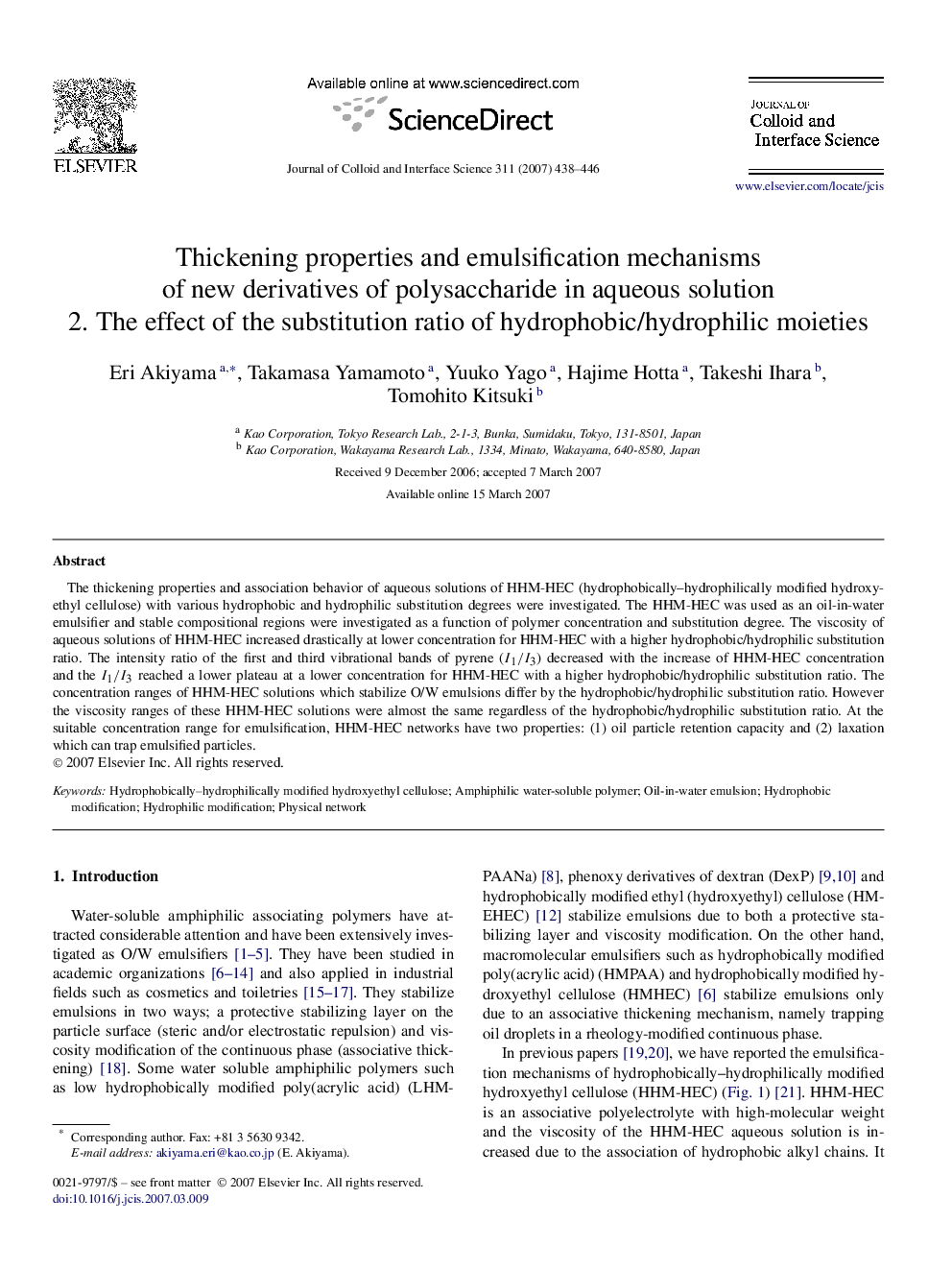| Article ID | Journal | Published Year | Pages | File Type |
|---|---|---|---|---|
| 611581 | Journal of Colloid and Interface Science | 2007 | 9 Pages |
The thickening properties and association behavior of aqueous solutions of HHM-HEC (hydrophobically–hydrophilically modified hydroxyethyl cellulose) with various hydrophobic and hydrophilic substitution degrees were investigated. The HHM-HEC was used as an oil-in-water emulsifier and stable compositional regions were investigated as a function of polymer concentration and substitution degree. The viscosity of aqueous solutions of HHM-HEC increased drastically at lower concentration for HHM-HEC with a higher hydrophobic/hydrophilic substitution ratio. The intensity ratio of the first and third vibrational bands of pyrene (I1/I3I1/I3) decreased with the increase of HHM-HEC concentration and the I1/I3I1/I3 reached a lower plateau at a lower concentration for HHM-HEC with a higher hydrophobic/hydrophilic substitution ratio. The concentration ranges of HHM-HEC solutions which stabilize O/W emulsions differ by the hydrophobic/hydrophilic substitution ratio. However the viscosity ranges of these HHM-HEC solutions were almost the same regardless of the hydrophobic/hydrophilic substitution ratio. At the suitable concentration range for emulsification, HHM-HEC networks have two properties: (1) oil particle retention capacity and (2) laxation which can trap emulsified particles.
Graphical abstractFigure optionsDownload full-size imageDownload as PowerPoint slide
